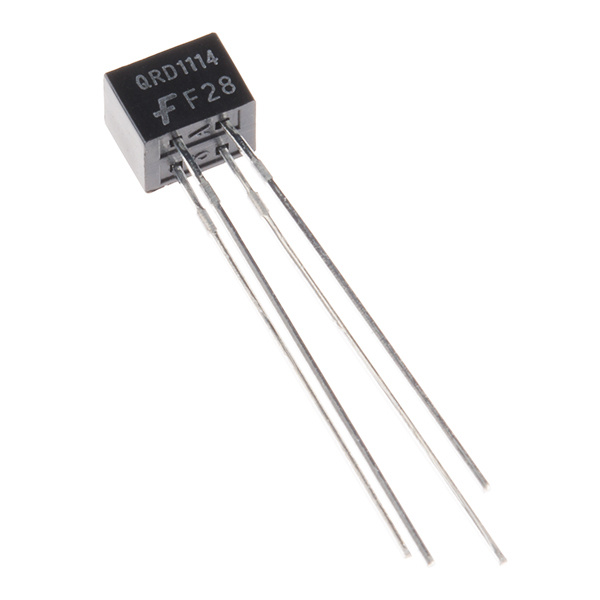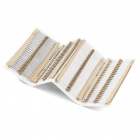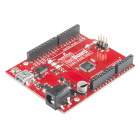QRD1114 Optical Detector Hookup Guide
Introduction
The QRD1114 is a half-LED, half-phototransistor, all infrared reflective optical detector. It can be used to sense objects in close proximity or even detect the difference between black and white surfaces. Photodetectors like these are critical components for projects ranging from line-following robots to close-proximity detection in smartphones.
The QRD1114 is easy to hook up: All you need is a current-limiting resistor for the IR LED and a pull-up resistor on the phototransistor's collector pin. The component can be used to produce an analog signal -- read by a microcontroller's analog-to-digital converter pin -- proportional to a nearby object's proximity.
Suggested Materials
This tutorial serves as a quick primer on reflective photodetector's and demonstrates how to hook them up and use them. Beyond the sensor itself, the following materials are recommended:
Arduino Uno -- We'll be using the Arduino's analog-to-digital converter to read in the analog output voltage of the photodetector. Any Arduino-compatible development platform -- be it a RedBoard, Pro or Pro Mini -- can substitute.
Resistor Kit -- The LED portion of the photodetector requires a current-limiting resistor -- somewhere in the range of 330Ω. On the other half of the sensor we'll need a 10kΩ pull-up resistor to take advantage of the phototransistor's light-dependent current throughput. This resistor kit is handy for some trial-and-error testing to hone in on the most sensitive circuit possible.
Breadboard and Jumper Wires -- The photodetector's legs can be bent and shaped to fit a standard 0.1"-spaced breadboard. We'll then use the jumper wires to connect from breadboard to Arduino.
Suggested Reading
Reflective photodetector's are a great entry-level component for beginners, but there are still a few basic electronics concepts you should be familiar with. If any of these tutorial titles sound foreign to you, consider skimming through that content first.




